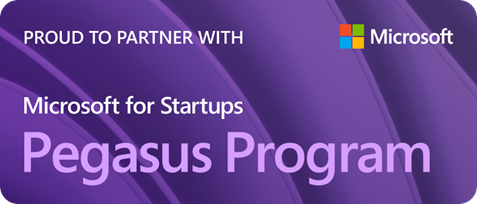How Start Left® + SASE Reinforces Micro-Segmentation & Least Privilege Access for Achieving Zero-Trust in Product Security
The rise of sophisticated cyber threats, insider risks, and software supply chain vulnerabilities has pushed security models to adopt a new approach: Zero-Trust Architecture (ZTA). One of the core pillars of Zero-Trust is micro-segmentation and least privilege access—ensuring that no one, not even trusted internal actors, has unfettered access to systems, data, or processes.

At Start Left® Security, we’ve built our platform around the principles of Zero-Trust, enhancing product security by applying micro-segmentation, least privilege access, and continuous monitoring through our patented PIRATE® model. Here’s how we do it.
What is Zero-Trust Architecture?
Zero-Trust Architecture is a security model that assumes that threats could come from both inside and outside the network. Therefore, no user, device, or system should be inherently trusted. Every action, request, or interaction needs to be authenticated, authorized, and continuously validated. Unlike traditional perimeter-based security, Zero-Trust focuses on securing access at the most granular levels—such as individual users, devices, and even software components.
Core principles of Zero-Trust include:
- Never trust, always verify: Every access request, even from within the network, must be verified.
- Assume breach: Design systems with the expectation that breaches can and will occur.
- Enforce least privilege access: Grant users the minimum level of access required to perform their tasks, reducing the attack surface.
At the heart of Zero-Trust is the need for strong identity verification, robust access controls, and continuous monitoring. That’s where Start Left® Security comes in.
How Start Left® Reinforces Zero-Trust in Product Security
Start Left® Security is designed to build security into the entire software development lifecycle (SDLC) while reinforcing key Zero-Trust principles such as micro-segmentation and least privilege access. By leveraging the PIRATE® model, our platform ensures that product security goes beyond simple protection measures and embeds a Zero-Trust mindset into the very fabric of product development and deployment.
1. Micro-Segmentation at the Core
In the context of micro-segmentation, the PIRATE® model involves dividing a company's applications or products into smaller segments and applying security policies to each portfolio or product line and product team individually. In the context of product security, this means ensuring that only authorized product team members have access to specific products and their components (code, tools, infrastructure, data), contextualized for continuous insider threat detection.
How Start Left® Does It:
- Granular Access Control Insights: Through the PIRATE® model, Start Left® reinforces fine-grained access insights that contextualize and monitor each team member’s activities, reducing the risk of insider threats and enhancing insights to unauthorized activity.
- Code, CI/CD, and Infrastructure Product-Centric Segmentation: We ensure that every part of the product development process—code, CI/CD pipelines, and infrastructure—can be highly visible in a product team context to effectively flag potential malicious activity.
2. Least Privilege Access for Development Teams
Least privilege access is a cornerstone of Zero-Trust, ensuring that users have only the minimal permissions they need to perform their tasks. This approach limits the risk of privilege escalation attacks and insider threats.
How Start Left® Enforces Least Privilege:
- Role-Based Access Control (RBAC) Insights: Start Left® reinforces least privilege access across product teams by integrating robust RBAC insights. This ensures that developers, DevOps engineers, and product managers only have access to the product teams' tools that they contribute to.
- Automated Audits & Adjustments: The platform continuously audits the tools that manage code, infrastructure, and data in a product team context, flagging instances of deviations from the team and potentially malicious activity. This enables leadership to quickly make adjustments to access privileges.
3. Continuous Monitoring with Real-Time Insights
Zero-Trust isn’t just about controlling access—it’s also about constantly verifying and monitoring all activities within the system. Traditional security methods often rely on periodic checks or snapshots of security posture, but in a Zero-Trust environment, continuous monitoring is key.
How Start Left® Enhances Continuous Monitoring:
- PIRATE® Model for Continuous Threat Detection: The PIRATE® model applies real-time monitoring to every action, code change, and system interaction, ensuring that no event goes unnoticed. Unauthorized or unusual activities are immediately flagged, allowing security teams to respond before damage occurs.
- Behavioral Analytics: Start Left® integrates behavioral analytics to track patterns in user activity. If a user starts performing actions outside of their typical behavior—such as accessing areas they don’t usually interact with—our system flags this as a potential insider threat and alerts security teams.
- Dynamic Risk Scoring: As part of our continuous monitoring efforts, Start Left® provides real-time risk scoring based on observed activities, vulnerabilities, and changes in the development pipeline. This ensures that security teams can prioritize the most critical risks.
4. Zero-Trust in Code, CI/CD, and Infrastructure
Start Left® extends Zero-Trust principles beyond user access, applying them to every piece of code, CI/CD pipeline, and infrastructure element within your product development environment.
How Start Left® Secures Code and Infrastructure:
- IaC Security & Container Scanning: Start Left® ensures that every infrastructure-as-code (IaC) template and container image is scanned for vulnerabilities before deployment. This approach aligns with the Zero-Trust principle that no code or infrastructure component should be trusted by default.
- Software Bill of Materials (SBOM): Our platform generates SBOMs for each codebase, ensuring that every component is accounted for, and that there are no hidden vulnerabilities or unapproved dependencies that could compromise security.
- Continuous Code Validation: Every code commit, change, or addition is continuously validated through static and dynamic analysis, ensuring that vulnerabilities are caught early and remediated before going live.
Start Left® + SASE: A Unified Security Solution
While the Start Left® Security platform focuses on securing the product development process through portfolio and product-centric segmentation concepts, pairing it with a Secure Access Service Edge (SASE) platform can create a more comprehensive security solution. SASE, which integrates wide-area networking (WAN) with security services such as Secure Web Gateways (SWG), Cloud Access Security Brokers (CASB), and Zero-Trust Network Access (ZTNA), is designed to secure the broader enterprise network and user access.
When combined, Start Left® and a SASE platform deliver end-to-end protection, from the internal product security at the code and infrastructure level, to external access and data protection. Here's how:
1. Enhanced Network and Application Security:
- Start Left® secures the internal product development processes, ensuring only trusted code, developers, and teams are involved in product creation.
- SASE strengthens network security by protecting access points, data in transit, and ensuring safe remote access for developers and other users.
2. End-to-End Zero-Trust Enforcement:
- Start Left® enforces Zero-Trust within the development environment, ensuring that no code, team member, or tool is trusted by default.
- SASE extends Zero-Trust to user access across the enterprise, securing data traffic, remote workforces, and cloud environments.
3. Complete Micro-Segmentation:
- Start Left® applies organizational design segmentation within the product development lifecycle, ensuring that teams, processes, and infrastructure are contextualized and monitored.
- SASE applies micro-segmentation at the network level, segmenting users and devices across distributed cloud environments, ensuring least privilege access at the network layer as well.
4. Unified Visibility and Control:
- Start Left® provides leadership and development teams with real-time visibility into product security, tracking risks and performance at every step.
- SASE delivers network-wide visibility and control, enabling security teams to monitor user activity and access while preventing unauthorized traffic or data exfiltration.
Together, Start Left® and a SASE platform offer a dual-layered approach to security. Start Left® secures internal product development and production, while SASE manages external access and traffic security, providing a holistic Zero-Trust security architecture for modern enterprises.
Driving Accountability, Governance & Transparency
Zero-Trust is more than just tools and policies—it's about fostering a culture of accountability and transparency. At Start Left®, security is a shared responsibility, extending from developers to executives.
- Clear Ownership of Security Tasks: Every vulnerability, misconfiguration, or security risk identified by Start Left® is assigned to a specific owner within the product team. This drives accountability and ensures rapid and effective remediation.
- Top-Down Visibility for Leadership: Leadership gains real-time visibility into the security posture of their entire organization, allowing them to make informed decisions and guide their teams toward a more secure environment with continuous insights.
Enhancing Zero-Trust with PIRATE®
The PIRATE® model is the foundation of Start Left’s security platform, advancing Zero-Trust by providing contextualized monitoring and detection. It delivers real-time insights into user behavior, vulnerabilities, and code changes, embedding security throughout the product development process.
- Insider Threat Detection: PIRATE® continuously monitors for insider threats, flagging anomalous behavior or unauthorized access that could indicate fraudulent or malicious activity.
- Data-Driven Decision-Making: PIRATE®'s contextual insights enable security teams to prioritize critical threats and vulnerabilities, ensuring decisions are aligned with both security and business objectives.
Build a Secure, Zero-Trust Product Development Environment
Start Left® Security supports organizations in implementing Zero-Trust Architecture across their product development lifecycle. Through micro-segmentation, least privilege access, and continuous monitoring, Start Left® ensures that no user, code, or system component is trusted by default.
With Start Left®, you're not just adopting a security tool—you're fostering a culture of accountability, transparency, and proactive security aligned with modern Zero-Trust principles.
Conclusion: A Complete Zero-Trust Architecture
Start Left® Security's PIRATE® model strengthens product security by embedding micro-segmentation, least privilege access, and Zero-Trust principles throughout the development process. When integrated with a SASE (Secure Access Service Edge) platform, this creates a comprehensive, end-to-end Zero-Trust solution that safeguards both product development and network security.
This powerful combination secures every layer, from code repositories to cloud environments, giving leadership the tools to monitor and manage security risks in real-time. By merging Start Left® Security with SASE, organizations can build a resilient, adaptable security posture that meets the demands of both modern development and remote workforces. This holistic approach ensures that both internal and external operations are protected under a unified Zero-Trust strategy.
SHARE!
More Resources















